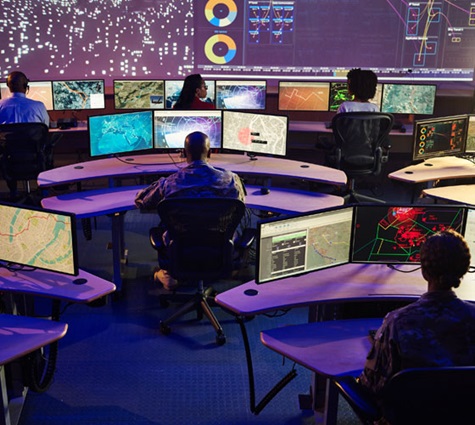Milliseconds Matter
Pioneering the Golden Age of Homeland Defense
By William Furlong and Caroline Mroz
Providing for the common defense — as the Founding Fathers wrote in the preamble to the U.S. Constitution — is an essential charge of the U.S. government.
Today, upholding America’s national security is more critical, and challenging, than ever before. A wide range of adversaries have and continue to develop threat capabilities that threaten the American homeland — ranging from unmanned systems to intercontinental ballistic missiles to new, sophisticated threats like hypersonic weapons.
Addressing this unprecedented threat landscape requires the nation to lean into our missile defense legacy while thinking beyond what was done in the past. Weaving together experience and innovation, the U.S. government is partnering with industry to rapidly field a Golden Dome for America — an end-to-end, integrated homeland defense ‘system of systems’ to protect the American people.
“As threats evolve and emerge, this once-in-a-generation initiative is urgently needed,” said Vice President Raymond Sharp, who is leading the company’s Golden Dome efforts. “We're bringing our missile defeat thought leadership to get after this problem, and we’re ready to lead the way in delivering a comprehensive architecture to protect our nation. We have the most diversified portfolio of missile defense capabilities; we have ready-now technologies and products that are essential to a strong Golden Dome capability and our people are currently providing much of the nation’s missile defense infrastructure.”
Countering the Threat

While a missile event can happen in minutes, imagine it in freeze-frames of a film.
In the first frame, a missile launches; the following frames form its trajectory towards its target, which looks different depending on whether the missile is a traditional long-range ballistic missile, a high-speed hypersonic missile or a shorter-range cruise missile. If the missile continues unmitigated, the final frame will show the weapon reaching its target.
As with any film, there’s always something happening off-camera. Even before a weapon is launched, America’s integrated sensing systems in space, in the air and at sea provide indications and warnings of impending attacks. Through the Golden Dome effort, the U.S. will expand capabilities that prevent and disrupt missiles from launching at all — before the film even begins.
If an adversary does execute a missile attack, it will likely be multiple missiles at once requiring a robust missile defense architecture. Today, the U.S. fields a range of surface-launched kinetic interceptors, which are powered by solid rocket motors and neutralize incoming ballistic, hypersonic and advanced cruise missiles in and above the atmosphere. Through Golden Dome, an integrated network of space-based interceptors would be fielded — an innovative concept requiring cutting-edge technologies and deep-rooted space and missile defense expertise.
“Interceptors are critical to our nation’s missile defense architecture,” said Wendy Williams, Vice President and General Manager, Northrop Grumman Launch and Missile Defense Systems Division. “They are a powerful tool in our nation’s arsenal for countering a range of threats, and Northrop Grumman has delivered this capability for decades.”
The Eyes and Brains of the Mission
Once a threat is launched, the nation’s warning systems detect the launch, identify the type of threat and track its trajectory, all in a matter of seconds. For decades, Northrop Grumman has been a key provider of the systems, payloads and algorithms that enable this critical capability.
“Missile warning and tracking systems are our nation’s eyes in the sky, delivering a decisive advantage,” said Chris Adams, Vice President and General Manager, Northrop Grumman Strategic Space Systems Division. “Our sensing systems not only give our warfighters advance notice but supply crucial information to inform their decision-making in these high-pressure moments.”
The information from these systems is delivered via ground-based technologies to sites that employ sophisticated software to process and fuse the data, conveying a 3D-fidelity view of the situation to decisionmakers and warfighters.
Currently, multiple regional and branch-specific command and control (C2) systems direct U.S. responses to foreign missile threats in specific theaters of operations. Through Golden Dome for America, these C2 systems would be integrated to provide a real-time picture of the global battlespace of missile threats. This would enable existing regional C2 systems, like the Integrated Battle Command System, to take data collected by sensors like the AN/TPS-80 Ground/Air Task-Oriented Radar — which detects, identifies, and facilitates engagement of airborne threats — and more effectively share that information in the Golden Dome environment.
Golden Dome is fast-tracking advanced homeland defense capabilities and combining the best of existing and new programs on this expedited timeline will require not only partnership and integration, but innovation and expertise — as well as the facilities, workforce and supply chain to support this rapid pace.
“Northrop Grumman has been at the forefront of homeland defense for decades and is delivering advanced capabilities now,” said Raymond. “We’re ready to accelerate and innovate to address this national challenge.”